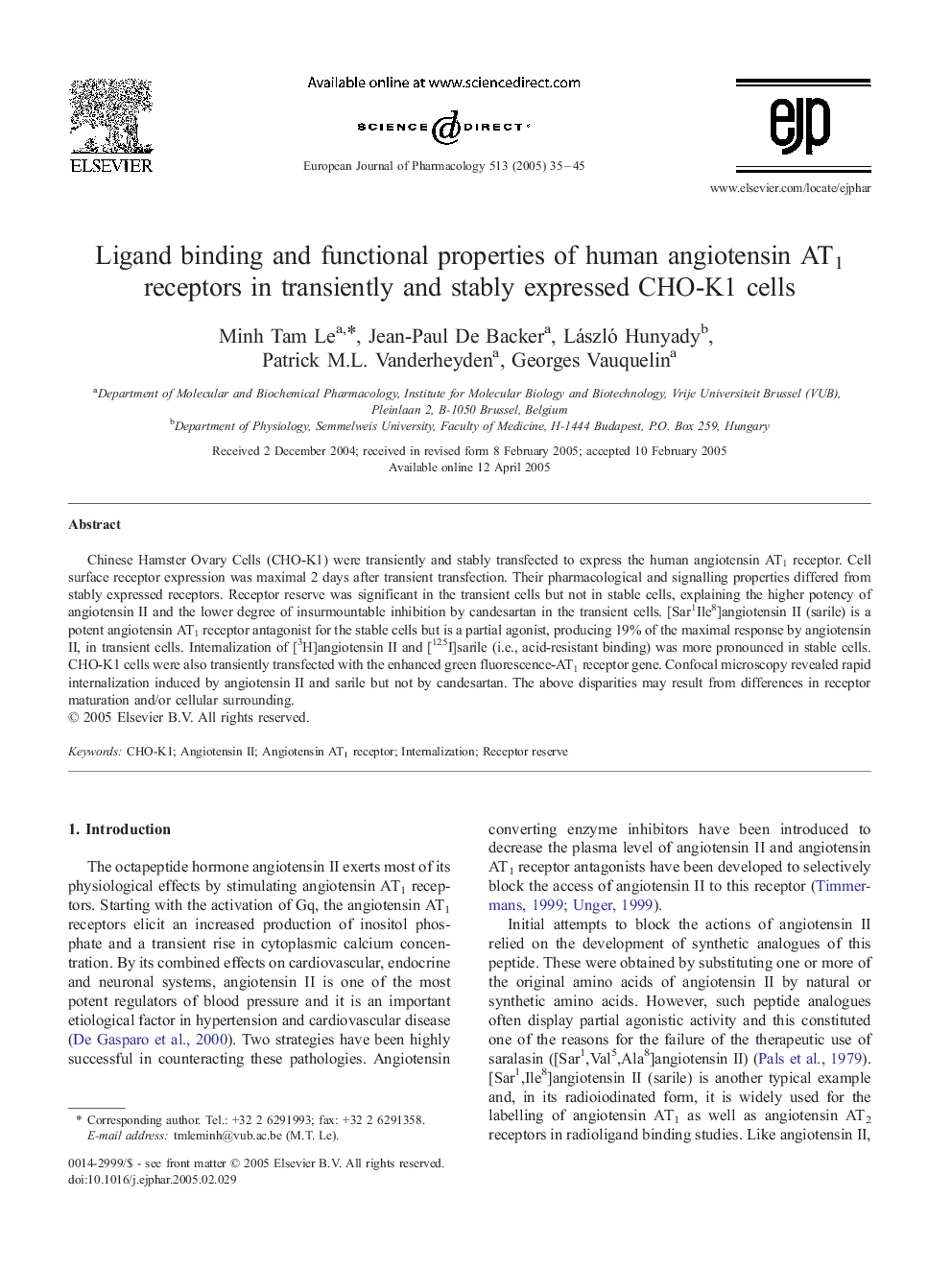| Article ID | Journal | Published Year | Pages | File Type |
|---|---|---|---|---|
| 9921365 | European Journal of Pharmacology | 2005 | 11 Pages |
Abstract
Chinese Hamster Ovary Cells (CHO-K1) were transiently and stably transfected to express the human angiotensin AT1 receptor. Cell surface receptor expression was maximal 2 days after transient transfection. Their pharmacological and signalling properties differed from stably expressed receptors. Receptor reserve was significant in the transient cells but not in stable cells, explaining the higher potency of angiotensin II and the lower degree of insurmountable inhibition by candesartan in the transient cells. [Sar1Ile8]angiotensin II (sarile) is a potent angiotensin AT1 receptor antagonist for the stable cells but is a partial agonist, producing 19% of the maximal response by angiotensin II, in transient cells. Internalization of [3H]angiotensin II and [125I]sarile (i.e., acid-resistant binding) was more pronounced in stable cells. CHO-K1 cells were also transiently transfected with the enhanced green fluorescence-AT1 receptor gene. Confocal microscopy revealed rapid internalization induced by angiotensin II and sarile but not by candesartan. The above disparities may result from differences in receptor maturation and/or cellular surrounding.
Related Topics
Life Sciences
Neuroscience
Cellular and Molecular Neuroscience
Authors
Minh Tam Le, Jean-Paul De Backer, László Hunyady, Patrick M.L. Vanderheyden, Georges Vauquelin,
